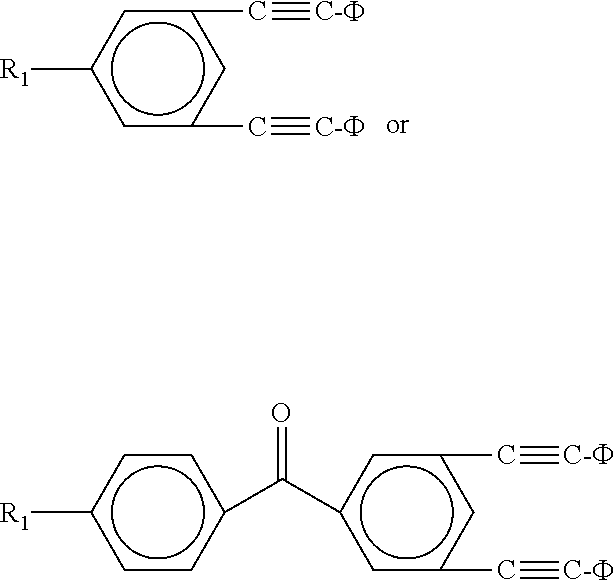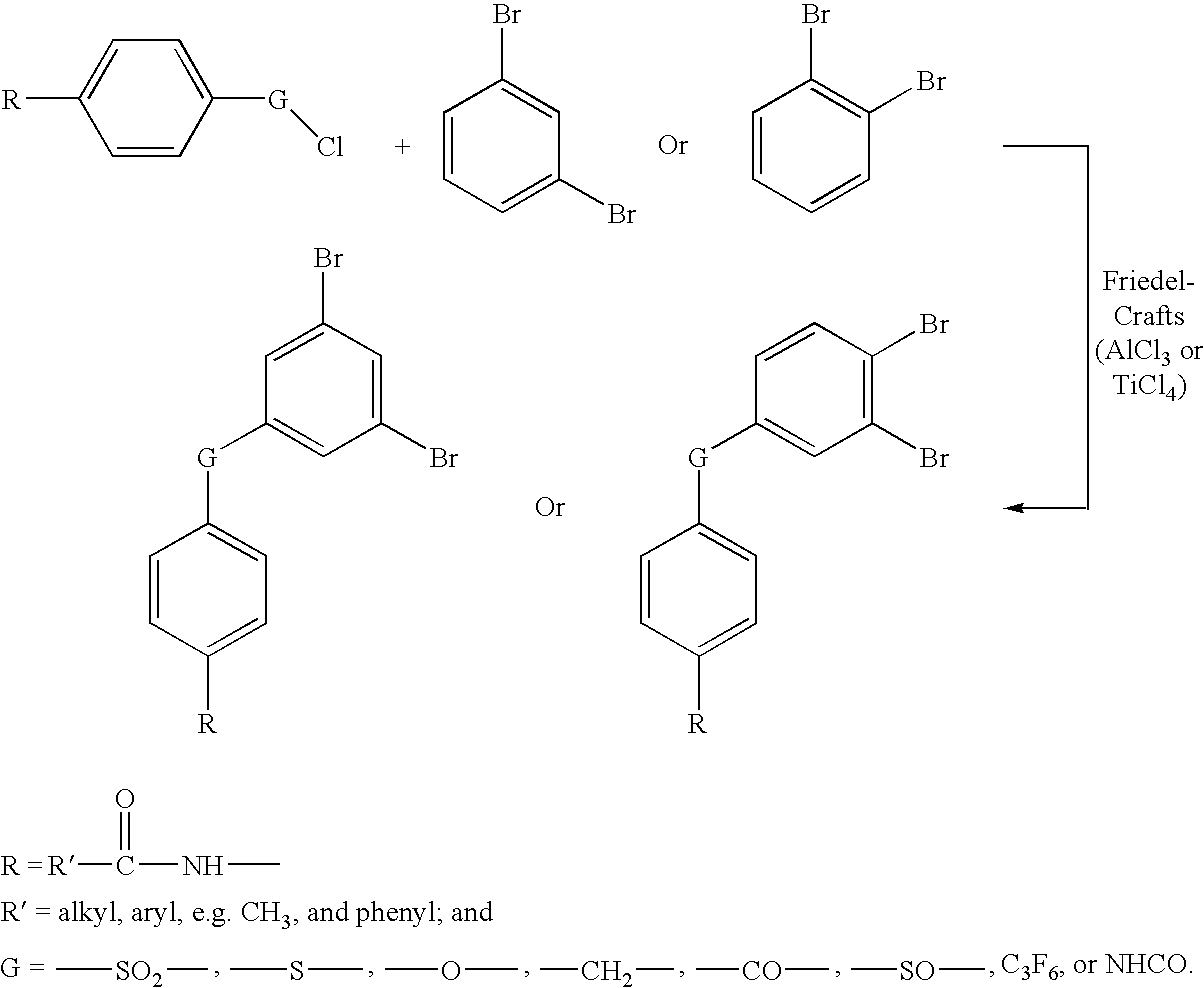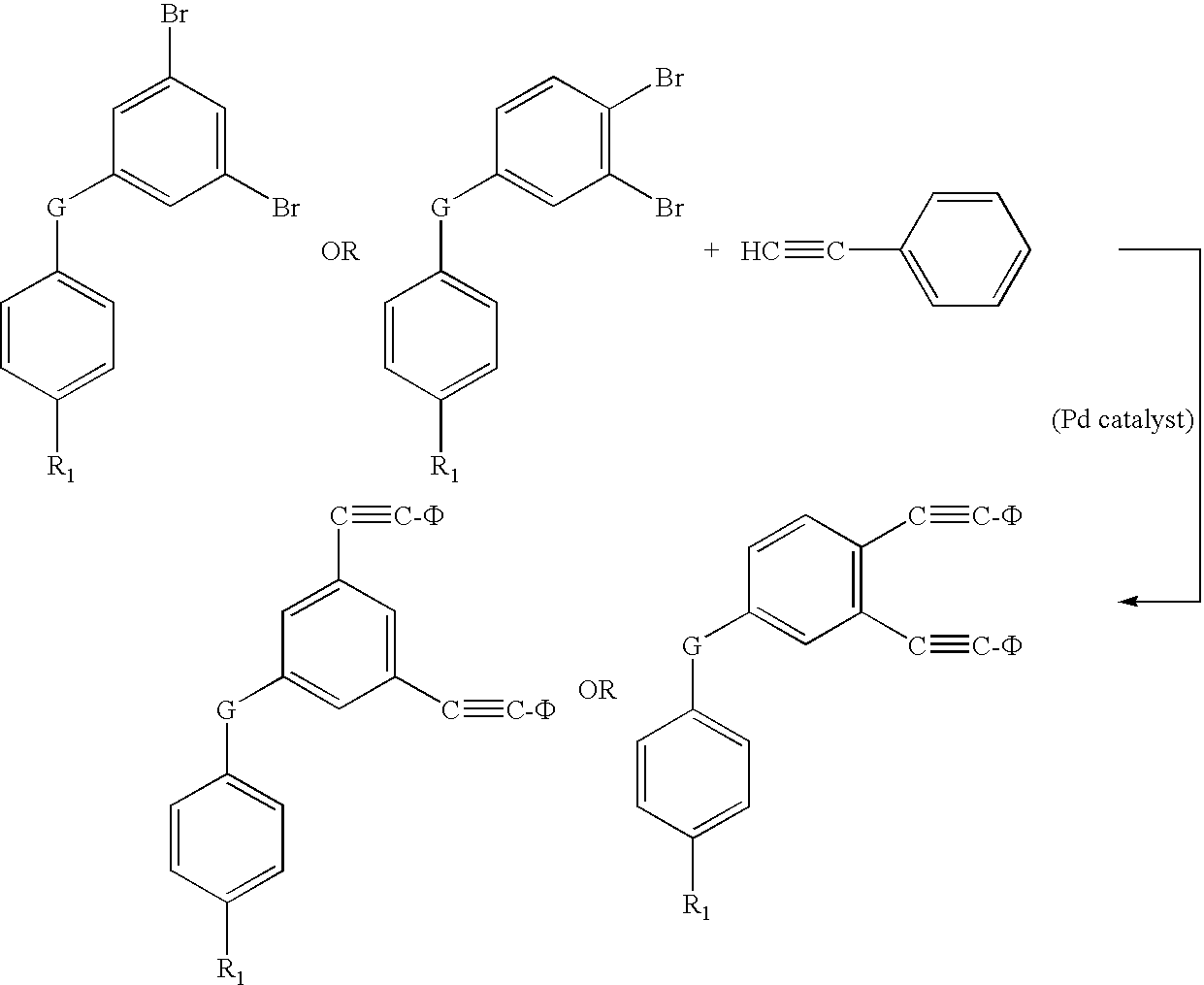Oligomers with di-phenylethynyl endcaps
a diphenylethyl endcap and oligomer technology, applied in the field of diphenylethyl endcap oligomers, can solve the problems of limiting the degree of crosslinking that can be achieved, high temperature thermosetting resins are undesirable in many applications, and epoxy-based composites are suitabl
- Summary
- Abstract
- Description
- Claims
- Application Information
AI Technical Summary
Benefits of technology
Problems solved by technology
Method used
Image
Examples
Embodiment Construction
Di-phenylethynyl endcapped oligomers for use in high-temperature polymer-matrix composites are disclosed below in detail. Di-phenylethynyl endcaps provide composites with significantly higher mechanical properties and increased stability, than known mono-functional endcaps. Di-phenylethynyl endcaps can have amine, anhydride, hydroxy, or acid chloride functionality to react with backbones of various different functionalities. For example, amine-functional endcaps can react with anhydride-functional backbones; acid chloride-functional endcaps can react with amine-functional backbones; etc. Endcaps can be made from several routes, including, for example, starting with brominated compounds as bromines that are reacted with phenylacetylene, using palladium-based catalysts, to replace the bromines with phenylethynyl moieties.
In an exemplary embodiment, blends are used for tailoring the mechanical properties of composites while retaining ease of processing. Advanced composite blends can be...
PUM
| Property | Measurement | Unit |
|---|---|---|
| temperatures | aaaaa | aaaaa |
| glass-transition temperatures | aaaaa | aaaaa |
| temperatures | aaaaa | aaaaa |
Abstract
Description
Claims
Application Information
 Login to View More
Login to View More - R&D
- Intellectual Property
- Life Sciences
- Materials
- Tech Scout
- Unparalleled Data Quality
- Higher Quality Content
- 60% Fewer Hallucinations
Browse by: Latest US Patents, China's latest patents, Technical Efficacy Thesaurus, Application Domain, Technology Topic, Popular Technical Reports.
© 2025 PatSnap. All rights reserved.Legal|Privacy policy|Modern Slavery Act Transparency Statement|Sitemap|About US| Contact US: help@patsnap.com



